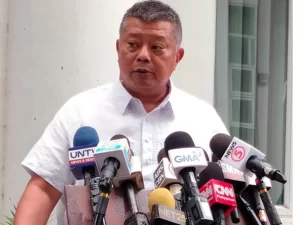
IN response to the recent earthquake in Cebu, the Bureau of Customs (BOC) has turned over abandoned and forfeited goods to the Office of Civil Defense (OCD) to assist affected families.
The donation, primarily sourced from the Manila International Container Port (MICP), includes essential items such as: 56 Rapid Emergency Tents and 1,087 assorted tents for temporary shelter, 50 mobile power supply units to provide electricity, and a bio-toilet unit to ensure sanitation for displaced residents. These items were officially released and turned over to the OCD after being declared abandoned and forfeited to the government, in accordance with customs procedures.
In addition to the forfeited goods, BOC officials and personnel donated over 100 sacks of rice to bolster food assistance efforts.
BOC Commissioner Ariel F. Nepomuceno, drawing on his experience as former Undersecretary of the Department of National Defense and Administrator of the OCD, underscored the importance of directing government resources to those in need during times of crisis.
“In moments like this, every donation can make a difference for our countrymen who have lost their homes and security,” said Commissioner Nepomuceno. “Having worked with the OCD in the past, alam ko po firsthand kung gaano kahalaga na mabilis, maayos, at diretso ang tulong sa mga kababayan nating nasalanta (I know firsthand how important it is that aid reaches our affected countrymen quickly, efficiently, and directly).”
MICP District Collector Rizalino Jose C. Torralba affirmed the Port’s commitment to using abandoned and forfeited goods for public benefit.
“The Manila International Container Port stands in full support of the BOC’s thrust to transform abandoned goods into opportunities for service. Through this donation, we hope to extend help and bring comfort to our fellow Filipinos in Cebu who are recovering from this calamity,” said Collector Torralba.
The OCD will oversee the distribution of the donated items to affected families in Cebu, ensuring that the aid reaches the communities with the greatest need. This collaborative effort demonstrates the effective coordination of government agencies in maximizing resources and providing timely support during emergencies.



